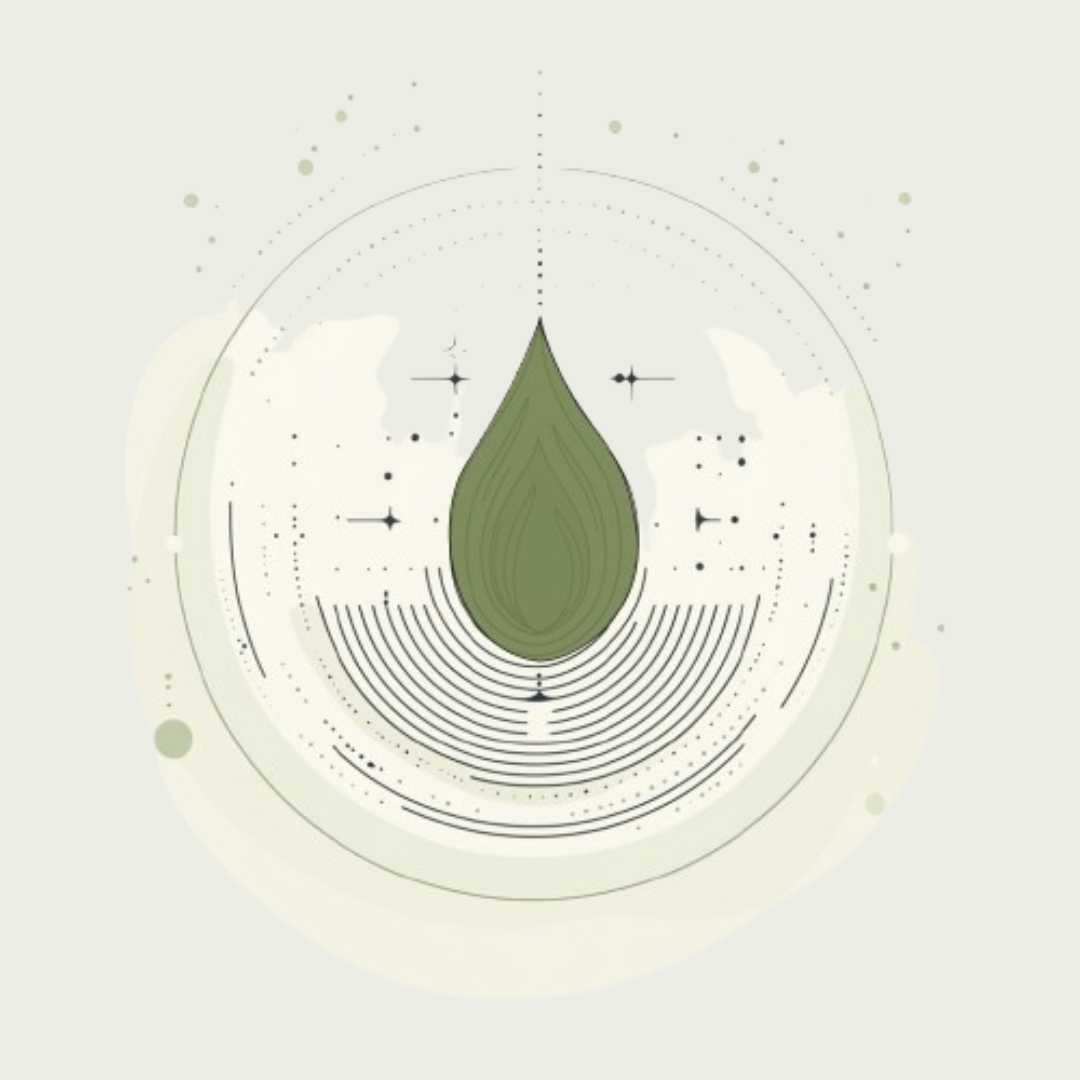Highlights
Energy plays an important role in our lives. We need energy and vitality to be able to lead our life in a healthy way. In fact, our life force or Prana is believed to be nothing but energy. We get energy from nature through the sun and other natural elements. Ayurveda is the science of life. This ancient wellness system is a natural system of healing. Ayurveda believes that there are primary functional energies in our bodies that are aligned with the elements of nature. These three forces of energies are known as Doshas (Kapha - Vata - Pitta). They are a very important concept in Ayurveda. The entire system of Ayurvedic healing is directly related to the three Doshas. The article explains all about these forces of nature and how they impact your health and life.
The Elements and the Doshas
Vata, Pitta and Kapha are the three types of Doshas or primary functional energies in the body. Vata is related to wind. Pitta is related to fire and Kapha relates to water. These Doshas are related to the elements of nature. It is commonly believed that there are five elements of nature. These five elements are:
-
Earth (Prithvi)
-
Air (Vayu)
-
Water (Jala)
-
Fire (Teja)
-
Space (Aakash)
Vata Kapha Pitta have a strong relationship with the elements of nature. The relationship is defined as given below:
-
Vata Dosha is related to air and space.
-
Pitta Dosha is related to fire and water.
-
Kapha Dosha is related to earth and water.
What is Vata Dosha
Air is the active element in Vata Dosha. Space acts as a regulatory element. Air moves slowly and space expands. If space does not expand or constrict, then air moves fast. This is the inherent characteristic of Vata Dosha.
What is Pitta Dosha
Pitta Dosha has fire as the active element. Water helps to regulate or control fire. When the fire increases or burns more, then water helps in cooling leading to hydration. If water is more, then the fire increases to ensure a balance.
What is Kapha Dosha
Kapha Dosha has the earth as the main element. Water acts as the regulatory element for this Dosha. When water is more, it moves fast. When the earth is more, the movement becomes sluggish. This is the interplay between these two elements.
The five inert elements of nature are energized into the body in the form of the three Doshas. These Doshas are to be found in every individual. There are optimal levels of Kapha Pitta Vata in each individual. This represents the balance of energy that ensures good health. If any of the Doshas are not as per optimal levels, it is due to a vitiation in the Dosha. This vitiation or imbalance affects the health of an individual. It must be noted that the balance of the three Doshas varies from one individual to another. It is unique to each person. In some people, the three Doshas are equally balanced. This is known as a Tridoshic state.
The Innate Nature of the Doshas
Each of the three Doshas has a specific nature. This nature is based on the innate qualities of each of these Doshas. It is important to understand the qualitative nature of Kapha, Vata, and Pitta doshas.
-
Vata being formed of air and space has qualities like dry, cold, rough, light, clear, mobile, and subtle.
-
Pitta being formed of fire and water has qualities like hot, light, sharp, oily, liquid, and mobile.
-
Kapha being formed of earth and water has qualities like heavy, slow, smooth, oily, soft, stable, and cloudy.
Based on the qualitative nature of the Doshas, there are Ayurveda types of bodies that can be defined. This is the constitution of an individual that is decided based on the predominant Dosha. Each ayurvedic body type has a particular type of body constitution based on the Dosha. There are ten ayurvedic types of bodies based on the Dosha combination. There are three main body types – Vata, Pitta, and Kapha.
Vata Body Type
The Vata body type refers to those who have a predominant Vata Dosha with more qualities and characteristics of Vata. The Ayurveda body type of Vata is described as follows. They are slim and energetic. They are usually creative individuals. They are easily capable of thinking out of the box. Their mood can change and they can be influenced by the weather, as well as the food taken. The following are some of the strong qualities of the Vata type body:
-
Quick learner
-
Creative minded
-
Can multitask
-
Kind by nature
-
Flexible
-
Slim
The negative qualities of the Vata constitution, which are their weaknesses are:
-
The mood is not stable
-
Susceptible to anxiety
-
Sensitive to the cold weather
-
Appetite can vary and has digestive problems
-
Circulation can be poor
-
Sleep problems are common
Pitta body type
The pitta type body has a combination of fire and water. They are athletic individuals who are usually well-built. They have good leadership abilities. They are aggressive by nature and are goal-oriented. This nature can get them into trouble as they are likely to get into conflicts with others. The strong qualities of the Pitta type constitution are:
-
Intelligent by nature
-
Quick learner
-
Motivated and goal-oriented
-
Leadership skills are strong
-
Good circulatory system
-
Metabolism is good
-
Healthy skin and hair
-
Determined and tenacious
The weaknesses of the Pitta type body include:
-
Difficulty in being patient
-
Gets into conflict with others easily
-
Gets hunger pangs and subject to mood swings
-
Sensitive to hot weather
-
Common health problem faced is inflammation
Kapha body type
The Kapha body type is earthy with the water element in it. This makes them grounded and they are more stable. They are strong and also caring by nature. They not only get things done but help and support others too. They are described perfectly by the phrase ‘slow and steady’.
The positive qualities, which are the strengths of the Kapha body constitution are:
-
Caring in nature and shows empathy
-
Trusts others
-
Calm, composed, and patient in nature
-
Wise and mature
-
Happy
-
Strong bones and joints
-
Immunity is usually strong
The weaknesses of the Kapha body type in Ayurveda are:
-
Metabolism is slow, which makes them sluggish
-
They can end up gaining weight fast
-
The tendency to oversleep
-
The slowness makes them sluggish
-
Prone to respiratory problems
-
Heart disease is a risk they face
-
Needs motivation else can get depressed
The three main types of bodies in Ayurveda have specific strengths and weaknesses that define the individual. The health of the individual depends on the predominant Dosha. Apart from the three ayurvedic body types described, the other body types can be Vata-Pitta, Pitta-Vata, Pitta-Kapha, Kapha-Pitta, etc. The combination occurs when more than one Dosha is dominant. The qualities of body type in Ayurveda are also a combination of two different types.
One more body type is the Tridoshic type where all the three Doshas are in perfect balance. A tridoshic type person has an equal balance of the three Doshas. Such a person is steady and usually in perfect health. The forces of the three Doshas balance each other contributing to overall good health.
Determining your body type
You can determine your body type by going through the characteristics mentioned below. This is a simple, easy, ready reckoner to help you understand your body type. Ideally, an Ayurvedic practitioner needs to examine you to understand your Dosha type. These tips act as a quick way to understand your body type.
If your energy levels are intense and your body is of the slim type, you are a Vata type of individual. Your skin is mostly dry. You have joints that can tend to be creaky. Your appetite is not very stable and you suffer from gas. You have an overactive mind and are lively, enthusiastic, and brimming with ideas. Vata individuals like summer, spring, and rain. They love adventures. They get anxious fast, are restless, walk fast, and speak with wisdom. When upset, they tend to complain more.
Pitta type individuals are quite intense in terms of energy levels. Their skin is susceptible to blemishes. They have a proportionate body with smooth joints that are supple. They have quite a good appetite. Sometimes they experience heartburn. They like cold weather and love sports. They like to be perfect in what they do. They have a clear purpose and like to notch up achievements. They tend to get angry fast. They speak with conviction and walk steadily. They are aggressive when upset.
Kapha body type individuals have a nicely rounded body and usually have steady energy levels. Their skin is oily and smooth. They have rounded joints that are quite flexible. Their appetite is constant with good digestion. Sometimes they have mucus in stools. They are calm, easy going by nature, and are caring for others. They love to spend time with family at home and enjoy a deep and restful sleep. They walk slowly and speak after giving a lot of thought. When upset they become jealous.
The Doshas and their Functions
Each of the three Doshas has specific functions that are based on the elemental forces they are made of. Vata governs movement, Pitta governs digestion, and Kapha governs structure. Each of the Doshas performs specific functions related to the body.
-
Vata is responsible for all movements within the body. It is typically present in the lower abdominal region below the navel. Vata helps in ensuring the smooth working of functions like respiration, smooth working of the Dhatus or tissues, managing all natural urges like hunger, thirst, urination, excretion, sleep, etc. Vata ensures smooth functioning of the heart, contractions of muscles, the flow of blood, and communication from the brain through the nerves to the entire body.
-
Pitta is responsible for body metabolism and the smooth functioning of the digestive system in the body. It is believed to be located in the upper abdominal region above the navel. Pitta is responsible for ensuring the normal working of the digestive system. Pitta being associated with fire ensures normal body temperature. It creates intelligence and bodily luster. It is associated with transformation and thus governs emotions and experiences.
-
Kapha is responsible to provide the body with vigor, vitality, and immunity. It is believed to be located in the chest region. It ensures the stability and strength of the bodily structure. Since it has the water element, it hydrates the tissues and cells. It also keeps the skin moisturized. It offers lubrication of the joints allowing them to function well.
Imbalance or Vitiation of the Doshas
When the Doshas are well balanced, it ensures good health. It is possible that there would be vitiation in the Doshas leading to an imbalance. There are various reasons for Dosha imbalance that include:
-
Improper diet, where the food eaten is against the prevailing Dosha.
-
Poor lifestyle management leading to improper daily routines.
-
Stress and tension that cause anxiety or trauma.
Whatever may be the reason, when any of the Doshas gets vitiated, it disturbs the state of harmony. This has a direct effect on health. Vitiation in any Dosha leads to excess Dosha that causes specific symptoms or health conditions. The disturbance caused is unique and may vary from one person to another. Let us see what vitiation in any of these Doshas would cause.
When the Vata Dosha is imbalanced, it can cause increased anxiety and fear. It can cause physical and mental exhaustion. It affects normal movement in the body. Imbalance can affect digestion and may lead to reduced immunity. It can lead to weight loss. Loss of vitality, bloating and gas, restlessness, sleeplessness. Dry and cool weather and consuming dry foods increase Vata in the body. This can also lead to an imbalance. Food also has an effect on Dosha. Pungent, bitter, and astringent food like leafy greens, chilli, cold foods, dried fruit, raw vegetables, and nuts can increase the effect of this Dosha.
Any imbalance or vitiation in the Pitta Dosha leads to inflammatory reactions within the body. This affects organs across the body. On a mental level, the Pitta imbalance can lead to a negative state of mind creating jealousy, frustration, anger, and a tendency to criticize others. Vitiation can affect digestion and it can lead to excessive hunger and thirst. Discoloration of skin and discoloration in the urine and stools can occur. It can also cause sleeplessness. Exposure to hot weather, the heat of the sun, and hot food can aggravate Pitta. Sour, salty, and pungent foods worsen Pitta Dosha. Spicy food and potatoes can vitiate this Dosha.
Kapha Dosha vitiation causes congestions in the tissues and organs of the body. Apart from physical stagnation, it also causes stagnation of the mind. It causes coldness. Body flabbiness and white skin coloration are some of the effects of this imbalance. Breathing problems are commonly caused by Vata imbalance. While the other two Doshas when vitiated cause sleeplessness, Kapha vitiation causes lethargy and excess sleep. On the mental plane, it causes excessive possessiveness, stubbornness, and resistance to any change. Cold and wet weather, heavy food, as well as fatty foods (including oils, nuts, and processed foods) can aggravate this Dosha.
Aggravation of any of the Doshas can worsen due to weather changes too. A key principle of Ayurveda is applicable here. This principle is called like increases like. What this means is when any element related to a particular Dosha increases, it enhances the qualities of the Dosha. This can worsen the vitiation in the Dosha. Kapha is associated with cold and wet traits. Exposure to cold and wet weather can thus increase Kapha in the body. This leads to further aggravation of the Dosha and causes health problems.
Vitiation in the Dosha can also occur when a particular Dosha is reduced. This also affects health. It may lead to deficiencies and problems but may not cause diseases. A decrease in Doshas can cause symptoms like:
-
Vata decrease causes weakness, speech problems, and a state of confusion.
-
Pitta decrease can lead to digestive problems, appetite loss, and immunity problems.
-
Kapha decrease can cause looseness in the joints, and may lead to palpitations.
Any vitiation or imbalance needs to be corrected. This correction needs to be done by rebalancing the Dosha. There are different ways of doing this. Medication using herbal Ayurvedic remedies, lifestyle changes, dietary changes, exercise, practicing Yoga and Pranayama, and undergoing therapies can help in correcting Dosha vitiation.
Correcting Vitiation of the Doshas
Just like the principle “like increases like”, another Ayurvedic principle states that opposites can help in correcting the vitiation. If the Dosha vitiation has caused too much cold, the opposite quality of heat can help in controlling and reducing the vitiation. Let’s see how this principle works.
The opposites of Vata are moist, warm, oily, and smooth. Hence to correct Vata vitiation, prefer warmth and moist not just physically but emotionally. Look for emotional comfort. Sweet fragrances and sweet music play a role in correcting vitiation. Eat food that is soft and warm like cooked vegetables, berries, eggs, and dairy products. Use more sour, salt, and sweet tastes in the food.
The opposites of Pitta are dry, soft, and cool. Seek out a cool place to correct the vitiation. Rest on a soft bed in a cool environment. Look for soft emotional support. Have food that is light, sweet, and cold. Fruits, vegetables, and salads can be included in the diet. The food must be sweet, astringent, and bitter in taste. Use natural sweet food and avoid processed and refined food.
The opposites of Kapha are warm, dry, light, and active. Seek a warm and dry environment. Look for active emotional support from your dear ones. Lead a physically active life. Your food must include those with pungent, astringent, or bitter tastes. Eat spicy and acidic foods like whole grains, eggs, low fat cheese, and include spices in the diet.
Exercise and physical activity are required for a healthy life. It helps you improve blood circulation and improve your immunity. You can regulate your exercise and activities based on the Dosha type. This will help you improve your health and correct any vitiation in the Dosha.
Vata type people need to be on the go and physically active. Movement is a key characteristic of this Dosha and hence the exercise should involve movement like cycling, jogging, running, walking, swimming, Yogasanas involving movement, dance, etc.
Pitta being a heat-generating Dosha, it is important not to increase the heat. Exercise generally increases heat. This is why Pitta type people should avoid over-exercise. They should exercise early morning or late evenings when the weather is cool. Pitta is competitive and playing team sports can be helpful. Self-massage with a cooling oil can be helpful.
Kapha needs motivation to exercise. Try to find a friend or family member who can join you and motivate you in your exercise. Practice more cardio exercises to improve health. Yoga is good for the body and should be practiced. Breathing exercises are needed since respiratory problems are common in this type.




